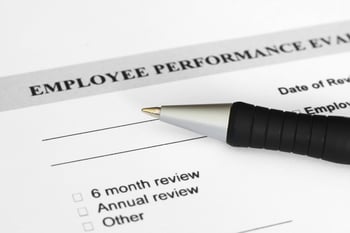
Managers often perceive performance reviews as a tedious and pointless requirement; however, reviews are essential for the development of your employees. To clarify, a meaningful review should consist of both a written review and a face-to-face meeting.
By the end of the process it should be clear to both you and your employee what aspects of the job the employee does well and what areas, if any, need improvement. Below are a few tips to help you get the most out of this year’s review process:
Prepare for the Written Review
Being prepared is probably the single most important step towards making written performance reviews meaningful. If you simply check the “satisfactory” box and don’t provide any details, the review isn’t productive. Even worse, if you check the “good” box for employees who need improvement, you’ll jeopardize the organization’s ability to take disciplinary action against that employee in the future.
Likewise, an employee can’t improve their performance if they’re unaware of any problems. Accordingly, you must provide accurate and thorough information on the written review. Here are some tips to help you prepare:
- Begin by summarizing the employee’s performance before completing the performance review paperwork and before meeting with the employee.
- Ideally you’ve discussed your employee’s performance (good or bad) throughout the year and hopefully you’ve documented these discussions. To prepare for the review, simply summarize your notes.
- If, however, the employee’s performance hasn’t been previously addressed then you’ll need to set aside some time to reflect, review and document.
- Put simply, this means that you should review any work-product, customer comments, etc. that have been provided prior to the review before documenting your comments on the written review.
Employee Input
Getting the employee’s input in the performance review process will help the employee to appreciate the review process. Consider providing your employees with a self-evaluation form well in advance of the performance review meeting. Ask about their successes and challenges throughout the previous year and if they need any additional resources to meet the organization’s expectations.
Talking Points for the Meeting
A meaningful review should include a face-to-face meeting. The meeting should include you, the employee and another manager. Make notes of what you’d like to cover during the meeting and prepare specific examples of instances when the employee has performed well and/or when their performance has fallen below expected standards.
Set Goals for the Next Year
The performance review is the perfect time to set new goals for your employee(s). Review your expectations with the employee during the meeting and document those expectations. Where feasible, make the goals as objective as possible. Objective goals make it easier for both you and the employee to determine whether the goals are realistic for the next year and if the goals are ultimately met.
Follow-up
After meeting with the employee and reviewing their performance, make sure to follow-up with the employee. Don’t wait another year before you discuss their performance again. Giving consistent feedback helps employees know you are invested in their performance, and may incentivize better productivity from them.
The Takeaway
Above all, don’t dismiss the review process as meaningless and mundane. Make it worthwhile and hopefully you’ll see an improvement in your employee’s performance and job satisfaction. By following these guidelines, you as a manager can be prepared for your employees’ work anniversaries and performance reviews and you can both (manager and employee) get the most out of the written and face-to-face reviews alike.



.png)

